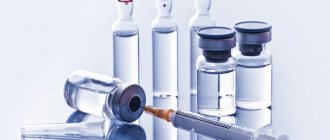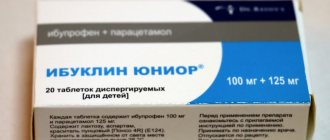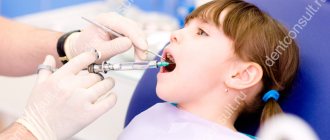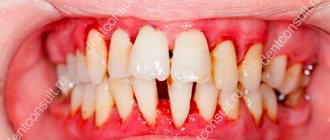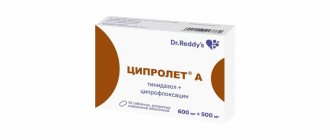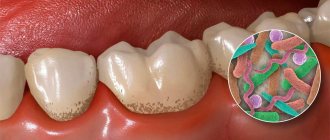Toothache is considered one of the most severe and unpleasant. It usually occurs suddenly when a person does not expect it. If this happens during the daytime, then you should immediately contact your dentist. But if this happened at night or on the road, then additional drugs and methods will be needed to help eliminate the pain and numb the tooth.
The causes of acute toothache can be different. This is an inflammatory process in the pulp cavity of the tooth and exposure of the dental nerve.
Possible causes of acute toothache
It is worth remembering the most common reasons:
- Caries. Bacteria destroy the surface of the tooth, resulting in a tooth reaction and discomfort when eating, eating sweets, or cold foods.
- Pulpitis. This is an inflammatory process that appears due to the fact that the patient did not treat caries in time. Pulpitis provokes acute toothache, which intensifies when drinking hot, cold drinks or food.
- Periodontitis. This is inflammation that occurs as a result of infection. Toothache has a pulsating form. It intensifies when mechanical stress is applied to the tooth.
- Periostitis. This is a special inflammation, it is accompanied by swelling of the gums. Afterwards, swelling and pain increase. Sometimes with periostitis, the upper jaw swells and the temperature rises. A pulsating toothache can be felt in the ears, eyes, and temples.
In what forms is the drug produced, components
Today, the drug is produced in 3 forms: in ampoules - an injection for the tooth, in the form of a gel with Lidocaine and a spray for the teeth. Further in this article we will concentrate on considering the spray, which is a colorless liquid, but with a pleasant menthol scent. The main active ingredient is the anesthetic of the same name - its concentration in a solution of 3.8 g (one bottle) is 4.8 mg. The composition of the drug also includes the following substances:
- propylene glycol,
- mint oil,
- ethanol solution – 96%.
A standard bottle holds approximately 650 doses. The kit includes a glass jar with a dispenser, a spray bottle and instructions for using the product.
What should not be done in case of acute toothache?
It is important to help yourself without creating serious complications. It is important to know what you are prohibited from doing when you have an acute toothache:
- do not heat the tooth or cheek. Warm compresses stimulate blood flow to the area where the problem is. Because of this, an entire row of teeth can be damaged. It is better to apply ice for a short time;
- avoid bed rest. It is better to endure toothache on your feet or take a half-sitting position. Then the patient will be more comfortable. When a person is horizontal, the blood flow to the tooth increases. The nerve endings in that place are already irritated, so in addition the pressure also increases, the pain intensifies. In case of night pain, it is better to sleep on high pillows.
Possible side effects
We figured out how to use Lidocaine spray, and now we’ll find out what side effects the drug can cause. So, after applying the product, the patient may experience local negative reactions such as burning, redness of the mucous membrane or skin. As a rule, such manifestations disappear on their own immediately after the onset of the analgesic effect. There is also a risk of developing allergies, which can manifest as itching and rashes. In extremely rare situations, anaphylactic shock occurs.
Some anxiety is likely to appear as a reaction of the nervous system. In some cases, the drug leads to a decrease in heart rate or blood pressure. To decide whether it is possible to use Lidocaine anesthesia for dental anesthesia in relation to a particular patient, the doctor must first make sure that he has no contraindications to the use of the drug.
Ways to get rid of acute toothache
Of course, with acute pain you should immediately go to the doctor, but if at a particular moment this is not possible, then it is worth remembering the main recommendations:
- Use of painkillers. Pharmacies sell many medications that have analgesic properties. The most popular are “Nurofen”, “Ketorol”, “Analgin”, etc. But before taking these drugs, it is important to carefully read the instructions. If there are contraindications, it is worth replacing the product with another one.
- Application of traditional methods. You can rinse your tooth with a baking soda solution. Pour warm water into a glass, add 1 tsp. soda and stir. You can add a few drops of iodine there (if you are not allergic). You can also use herbal infusions. They will help relieve dull throbbing pain. To temporarily relieve toothache, you should take St. John's wort, eucalyptus, oak bark, chamomile or sage. Dry tea is poured into a glass, poured with boiling water, and stirred. This drink should steep for 30 minutes. Afterwards, you should strain the infusion and you can rinse your mouth. But it is important to remember that the infusion should not be hot, but warm. To enhance the effect of rinsing, you can place cotton wool soaked in the infusion directly on the gum.
But temporary relief does not mean that you don’t need to go to the dentist! As soon as such an opportunity arises, you need to immediately make an appointment with a dentist, explain the situation and treat the aching tooth. So that this doesn't happen again!
Instructions and dosage
Lidocaine spray is intended for spraying onto the mucous surface in the problem area where sensitivity needs to be blocked. Let's figure out how to use it correctly and how to use Lidocaine to numb a tooth. The scheme here is very simple: before applying the drug, the bottle needs to be shaken thoroughly, while holding it strictly vertically. 3-5 sprays are enough to provide the required degree of anesthesia and prevent the absorption of too high concentrations of substances into the blood.
If we are talking about anesthetizing an area of the oral mucosa in a child, then we should do it differently. To begin with, the product must be sprayed onto a small piece of gauze, which must then be applied to the affected area. This method of applying the product is used so as not to inadvertently scare the baby, and also not to provoke a burning sensation in his mouth. For patients suffering from impaired liver and kidney function, the dosage should be reduced by at least 40%1.
Chronic pulpitis
In the most patient patients, acute pulpitis can become chronic. The pain becomes less acute and constant, sometimes subsides for a long time. If the carious cavity is difficult to access by irritants, chronic pulpitis can be almost painless.
Symptoms of chronic pulpitis
- Pain in the cold
- Pain when eating hot food
- Pain during temperature changes (for example, when you leave the house on a cold street)
- Prolonged aching pain if the carious cavity is clogged with food debris
Chronic pulpitis can worsen at any time and give you all the unforgettable sensations of acute pulpitis.
If chronic pulpitis is not treated, it can develop into periodontitis.
Effect on tissue regeneration
Tobacco smoke slows down tissue healing.
Is it possible to smoke after tooth extraction? This question is asked quite often in dental offices.
The answer is much more obvious and not rhetorical - after treatment of teeth or gums, tobacco smoke will not bring any benefit and will negatively affect wound healing. This is explained by vasospasm, so a decrease in blood in the tissue interferes with its regeneration; in addition, dryness cannot be beneficial for delicate mucous membranes.
Dentists advise refraining from smoking after tooth extraction or gum surgery. Otherwise, the likelihood of developing alveolitis increases.
Tobacco smoke negatively affects the formation of a blood clot that forms at the site of the removed tissue, which protects the bone and nerves from infection by pathogens. If this happens, the patient will complain of severe pain, unpleasant smell and taste in the mouth.
The negative effects of tobacco smoke are reversible, but this takes many years. According to doctors, only after ten years can we talk about reducing the risk of developing cancer to the level of a person who has never smoked.
Chronic periodontitis
Chronic periodontitis sometimes develops asymptomatically, or acute periodontitis can progress to this stage. Chronic periodontitis develops when the pulp dies, and favorable conditions are created in the tooth for the development of microorganisms. Sometimes chronic periodontitis can appear after a tooth injury.
Symptoms
- Changing the color of tooth enamel
- The presence of a fistula on the gum
- Painful sensations when chewing solid food
Chronic periodontitis can have many very serious complications: granuloma, root cyst, pathological fracture of the lower jaw, periapical abscess, phlegmon and others.
Pericoronitis
This is difficult eruption of wisdom teeth (eights). When a tooth cannot erupt normally, inflammation of the surrounding soft tissue and periosteum behind the dental socket begins. Inflamed gums are constantly injured when chewing, which further aggravates the process.
The inflammatory process can gradually lead to the development of purulent pericoronitis.
Symptoms:
- Constant pain that gets worse when chewing
- Pain radiates to the ear and temporal region
- Pain when opening the mouth
- Enlargement and tenderness in the submandibular lymph nodes
- Sharp pain when pressing on the gums, purulent discharge is possible
- Increased body temperature
In the future, the pain continues to intensify and the body temperature rises. The patient's health deteriorates significantly, and retromolar periostitis may develop.
Alternatives to cigarettes that cause less harm
Thanks to steadily developing technologies, smokers today have a chance to make their addiction less dangerous and protect their oral cavity. For this purpose, various alternative means , for example:
- Electronic cigarettes - in some ways, the principle of operation of an electronic cigarette is similar to an inhaler. This device has a shape similar to the usual cigarettes and creates the illusion that a person is using a regular tobacco product. An electronic cigarette includes a battery, LED indicator, vapor generator, replaceable cartridge and other components.
- Hookah is equipment for smoking hookah mixtures and consists of a shaft, a flask (water is poured into it) and a cup (the smoking mixture is poured into it). Essentially, a person inhales aromatic smoke and thereby satisfies his habit.
- Patches create optimal conditions for the intake of purified nicotine into the body, which helps satisfy the daily need for smoking.
- POD systems are compact electronic cigarettes with a small battery, which are a disposable item. Very convenient to use.
- Sprays are recommended during the period of quitting an addiction; their principle of action is similar to nicotine patches. But in both cases, the nicotine component is used as replacement therapy (to prevent the development of withdrawal syndrome). Suitable for experienced smokers. Sprays are available both nasally and orally.
Sources:
- https://telo.guru/kurenie/vred/izmeneniya/zuby-kurilshhika.html
- https://MikDent.ru/estetika/uhod/kurenie-i-zuby.html
- https://mnogozubov.ru/kurenie-vliyanie-na-zuby/
- https://Denta.help/terapevticheskaya/nekarioznye/zuby-kurilshhika-1313
- https://stom.32top.ru/stat/1877/
- https://dentamed.club/gigiena/profilaktika/zuby-kurilshhika.html
How is inflammation of the trigeminal nerve treated?
Correct treatment for inflammation of the trigeminal nerve can only be prescribed by a neurologist. Depending on the complexity of inflammation, the following agents are included in therapy:
- Drugs to combat symptoms (pain);
- Antispasmodics and muscle relaxants of central action;
- Alcohol blockades (for severe inflammation);
- Metabolic drugs;
- Anticonvulsants (carbamazepine, finlepsin);
- B vitamins;
- Physiotherapeutic procedures.
The measures are aimed at relieving inflammation and completely eliminating pain symptoms. Properly prescribed treatment for inflammation of the trigeminal nerve can not only restore excellent health, but also prevent relapses.
This information is for informational purposes only. Only a professional specialist can prescribe treatment after examination and diagnosis.
Additional instructions for use
Before spraying the spray on the mucous membrane, you need to carefully study the instructions that come with the kit. There are several special points to consider when using Lidocaine. Let's take a closer look at them.
During pregnancy and lactation
The drug is allowed for use in therapeutic doses during pregnancy. However, you should consult your doctor before using it. As for the lactation period, in this case it is better to wait to use the drug while the child is breastfed.
Use during pregnancy should be agreed with your doctor.
Read more about dental treatment during pregnancy in our special article>>>
Use in childhood
Lidocaine in the form of a spray is approved for children, but there are some nuances here. So, for example, it is recommended to apply the drug to children under the age of 2 years in a special way: first, the product needs to be sprayed onto a small gauze pad, and then applied to the area of pain. It should be taken into account that in childhood the swallowing reflex occurs more often than in adults, therefore it is not recommended to spray the anesthetic directly.
This is what an allergy to lidocaine looks like in a child
“The doctor prescribed Lidocaine for us after we had a baby tooth with gumboil removed. He said to apply it on cotton wool and apply it to the swollen gum so that it doesn’t hurt too much. We used it for just a couple of days, everything healed quickly, and the child did not complain of pain. Of course, you’d better consult your doctor about this, but in general I know for sure that the spray can be used for children...”
Irina V., Penza, from correspondence on the woman.ru forum
For liver problems
The drug should be used with extreme caution by people suffering from renal and liver failure. As mentioned above, the therapeutic dosage in this case should be reduced by at least 40%. In addition, in such a situation, using the spray without prior approval from a doctor is strictly contraindicated. This restriction also applies to patients with arterial hypertension and epilepsy.
In old age
Elderly people should also be careful with the anesthetic. The spray cannot be used without a doctor's prescription. There is a possibility that the active ingredient will have a negative effect on the cardiovascular system, so before using the drug you should make sure that the patient does not have any heart problems.
In old age, the drug should be used with caution
Lidocaine may react with other medications, which also needs to be taken into account. However, it does not affect the functioning of the central nervous system, therefore it does not impose any restrictions on activities that require increased concentration.
How to dispense in pharmacies and storage rules
The drug can be used for 5 years from the date of release. The bottle should be kept in a place protected from direct sunlight, where children cannot get into. Recommended storage temperature varies between 15-25 degrees above zero. The estimated cost of the drug in Moscow ranges from 350 to 380 rubles. "Lidocaine" is dispensed only with a prescription from a doctor, which excludes the possibility of its independent use without prior consultation with a specialist.



